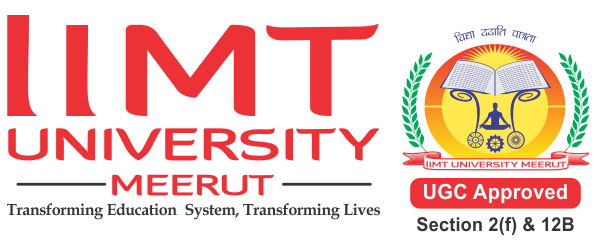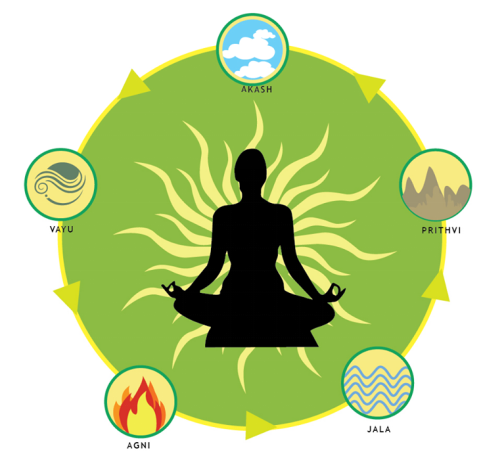HOW DOES NATUROPATHY WORK?
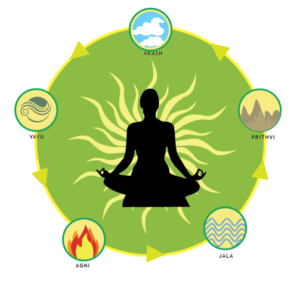
Naturopathy is a drug-free system of medicine that believes in a full-body health approach. This method is based on patient centric, drug free, safe, cost-effective facts. Naturopathy is not only a system of treatment but also a way of life. It applies the principles of health promotion, prevention of diseases, safe and disease management, rehabilitation and improvement of quality of life. The human body has a tremendous healing power and it needs a chance to heal the body. In Naturopathy, this power is used to cure diseases and maintain health for a long time. Naturopathy treats the human body by using the five basic elements of Panchamahabhoot (Earth, Water, Fire, Air and Sky) as shown in the picture.
Naturopathy helps to normalise imbalances in the Panchabhutas, correct impaired organ functions, correct abnormal composition of blood and body fluids, and eliminate accumulated toxins by improving the functions of the body’s excretory organs such as; skin, kidney, digestive system and lungs ETC.
Treatment Methods
Following methods are used to treat the patients:
1. Hydrotherapy
2. Mud therapy
3. Sun therapy, and colour therapy
4. Massage therapy
5. Magnet therapy
6. Natural diet and fasting therapy
7. Yoga therapy
8. Other treatments (acupuncture, acupressure, cupping therapy, kati, jaanubasti)
Now, lets discuss all these treatments in details:
1. HYDROTHERAPY
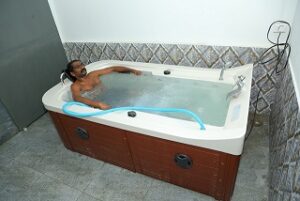
A branch of naturopathic medicine that deals with the use of water in various forms (ice, water, steam) at various temperatures, for various time periods, to treat diseases is known as Hydrotherapy. It uses the curative properties of water in the treatment of various ailments in the form of packs, compresses, baths and steam baths (back, spine, arm, leg), (chest, heart, throat) packs, local steam etc.
Throughout the beginning of time, hydrotherapy has been used to treat pain. The physiologic and bio-dynamic qualities of water are used to decrease pain and promote body function. A fundamental grasp of the various hydrotherapy procedures used for the treatment purpose. Some physical characteristics of water such as buoyancy, hydrostatic pressure, viscosity, refraction, and specific heats are responsible for the therapeutic effect of water.
Water has a wide range of physiological effects. The cardiovascular, pulmonary, circulatory, autonomic, and renal systems all experience these effects. The physiologic and therapeutic effects reported in individuals with musculoskeletal pain are most suited for those patients who are experiencing pain. The main therapeutic benefit of hydrotherapy are the encouragement of muscle relaxation, reduction of muscle spasm, and improvement of ease of movement.
2. MUD THERAPY
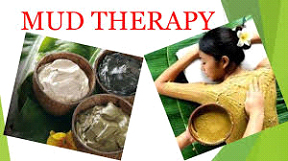
Mud is a symbol for prithvi (earth), one of the panchamahabhutas’ elements. It is regarded as some of the first universal knowledge for healing illness and restoring health. In Naturopathy, the usage of moistened earth is done properly and scientifically in order to improve the body from the inside out. According to history, people have used mud for medicinal purposes since the early Middle Ages. It served as a valuable therapeutic tool at the time. One of the early proponents of natural medicine was Just a thought that lying down and sleeping would heal all illnesses.
Mud therapy includes treatments such as mud packs (local mud baths), hot mud applications and full body mud baths. To provide a cooling effect by absorbing body heat, reducing inflammation, improving circulation, absorption and elimination.
Mud therapy, which uses mineral waters and mud packs to treat chronic illnesses, rose in popularity in Europe between the 17th and 19th centuries. The concept of mud therapy was created in pharmacology during the second half of the 20th century and is now employed in the spa treatments and alternative medicine. Since many millions years ago, Israel has used Dead Sea mud as a treatment for psoriasis and arthritis. Cleopatra the Egyptian Queen, had her own spa on the beaches of the Dead Sea and experimented constantly with beauty products made from the natural mud ingredients.
3. SUN THERAPY AND COLOR THERAPY
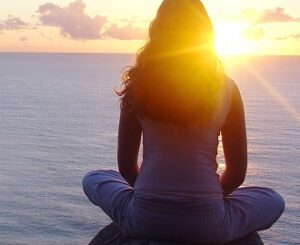
Surya Chikitsa is the therapy in which sunlight is used to cure various diseases. Surya Chikitsa focuses on the application of sunlight in the treatment of various diseases especially skin diseases.
Colour therapy involves the application of different colours for the treatment and management of diseases. Colour therapy is a type of holistic therapy that uses the visible spectrum of light and colour to affect a person’s physical or mental health. Each colour holds a specific frequency and vibration, which affects the energy and frequencies within our body. Colour charged oils and water are also used for the therapeutic purpose in this therapy.
4. MASSAGE THERAPY
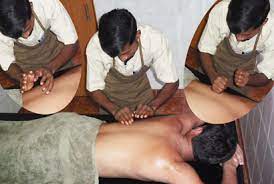
The practise of massage therapy involves the scientific manipulation of the body’s soft tissues. It primarily uses manual (hands-on) techniques to apply fixed or variable pressure, hold and move muscles, and manipulate body tissues.
Massage therapy is done to relax and detox the body, increase blood circulation, enhance nutrition to the muscles, improve blood circulation, improve skin activity, activate sweat glands, and normalise the functioning of the nerves.
5. MAGNET THERAPY
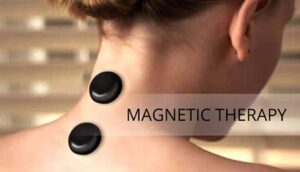
Magnets are used to relieve pain in various areas of the body. It is a system that treats the sick with the application of magnets to afflicted parts of the body. Magneto-therapy is based on the fact that magnetic fields have the ability to heal the body and relieve pain.
While the therapeutic benefits of static magnetic fields have been studied, magneto-therapy has a long history in Europe as a safe physiotherapist approach for the treatment of several disorders (articular, intra-abdominal, and intra-cranial). A patient stand within the coil as the electric current runs through it. In an effort to purportedly promote recovery, the patient’s entire body can be submerged in a magnetic field. Such therapies’ allure may be due to the placebo effect or maybe to some degree of healing impact. With its capacity to penetrate deeply into the tissue throughout the mending process, magneto-therapy is an alternative physical therapy treatment that has positive results.
The basic cellular restorative activities involved in the mechanism of action are based on the passage of electrical charges, which results in a net flow of ionic current. It is thought to provide repeatable healing effects by cytoprotecting cells and promoting the manufacture of growth factors.
Current technology enables the generation of a wide range of frequencies, modulations, impulse shapes, and exposure times. The used frequencies range from 1 to 100 Hz, and the magnetic flux density can reach 100 mT. Pulsed magnetic fields interact with living things through three physical processes that have been well-established: magnetic induction, magneto-mechanical effects, and electronic interactions.
6. NATURAL DIET AND FASTING THERAPY
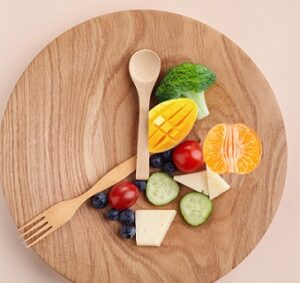
Naturopathy believes that food is an important factor in maintaining health and that a faulty lifestyle of food causes weakness of the digestive system and this leads to accumulation of toxins in the body which ultimately leads to diseases.
Diet and fasting play an important role in treating our faulty system as they facilitate faster removal of toxins and the healing process. Various types of cleansing and rejuvenation diet plans are offered according to the conditions and needs of the patient. Various types of fasting are done under the strict supervision of well trained naturopathic doctors. It is important that after fasting, the patient should break the fast gradually with fruit juices, fruits, salads and then a normal cooked diet.
7. YOGA THERAPY

Yoga therapy is the application of yogic concepts to a specific person in order to meet that person’s spiritual, psychological, or physical objectives. The techniques used are composed of well-thought-out procedures that may include, but are not limited to, Ashtanga Yoga’s yama, niyama, asana, pranayama, pratyahara, dharana, dhyana, and samadhi teachings. In order to meet the needs of the individual, other methods such as ritual, chanting, imagery, textual study, spiritual or psychological counselling, and meditation are also included. Individual diversity in age, culture, religion, philosophy, career, and mental and physical health are respected in yoga therapy. The skilled and informed yogin or yogini conducts yoga therapy in accordance with the time, location, and the practitioner’s age, strength, and other factors.
8. ACUPRESSURE
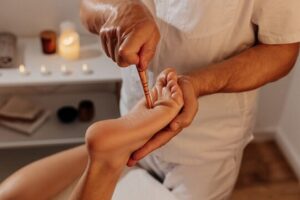
Acupressure has shown exceptional therapeutic promise for treating a variety of illness states. A kind of acupuncture is acupressure. The core idea behind acupuncture and acupressure is the activation of acupoints along meridians. In acupressure, muscle tension is relieved by pressing certain acupoints with the hands, pressing the thumbs on particular points, or using pressure to balance the flow of physiological energy. Like reflexology, acupressure also has therapeutic results when applied to a designated regurgitation zone. Applying physical pressure on trigger points, acupoints, or certain pressure points located along meridians is required for acupressure. The human body has meridians, which are pathways that support the steady flow of Ki and, consequently, good health.
The human body’s numerous organs and tissues are related to each meridian. Pressure applied to a specific location on a meridian causes it to become activated, which promotes pain relief both locally and across the body. It is a pressure point-based, hand-mediated energy healing treatment that is regarded as an effective method for the management of a variety of ailments as well as for the improvement of physical comfort, fulfilment, and economy. Acupressure is a manually administered, needle-free, non-invasive, economical, and non-pharmacological healing method that is used to improve patients’ well-being.
